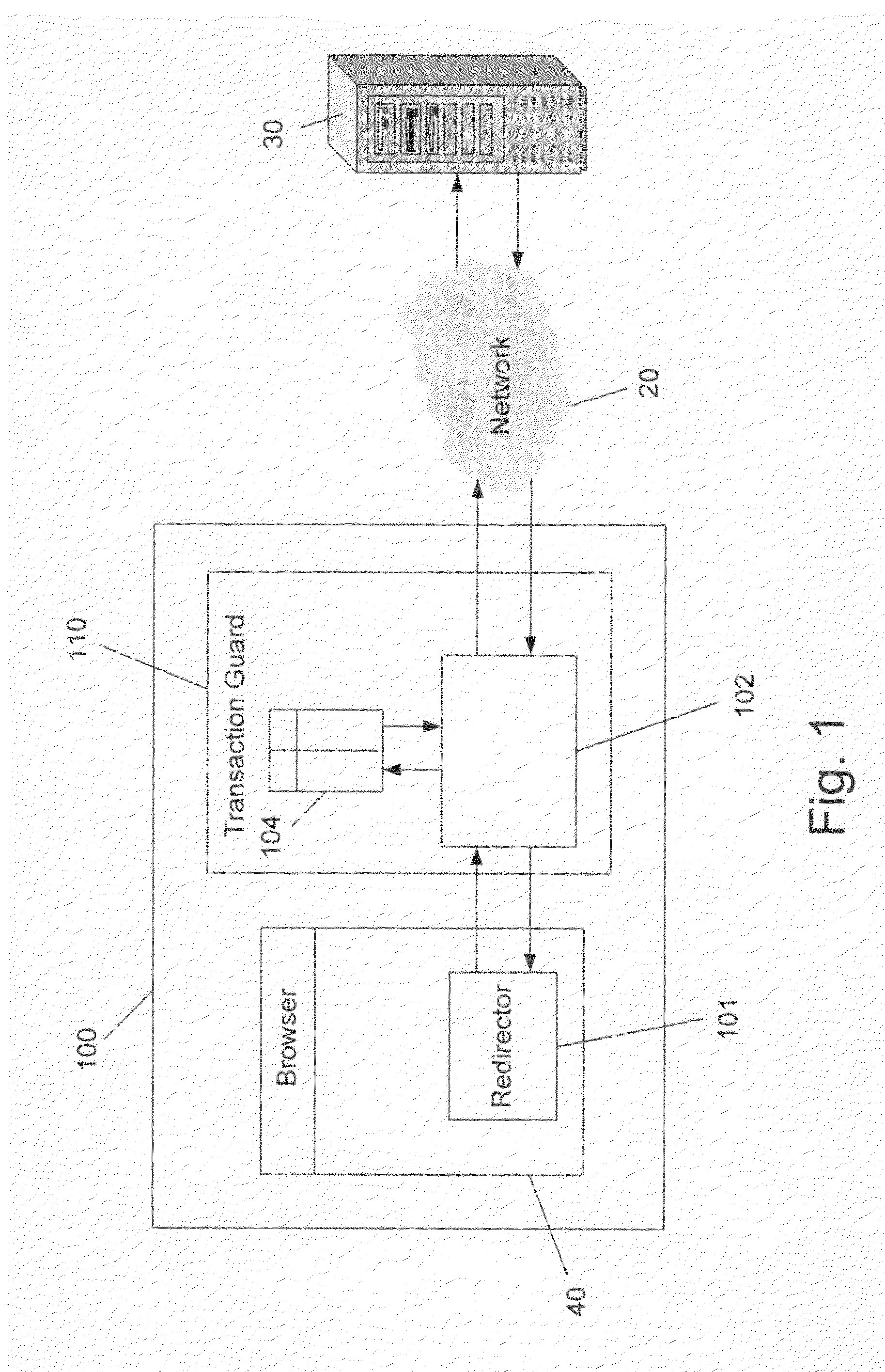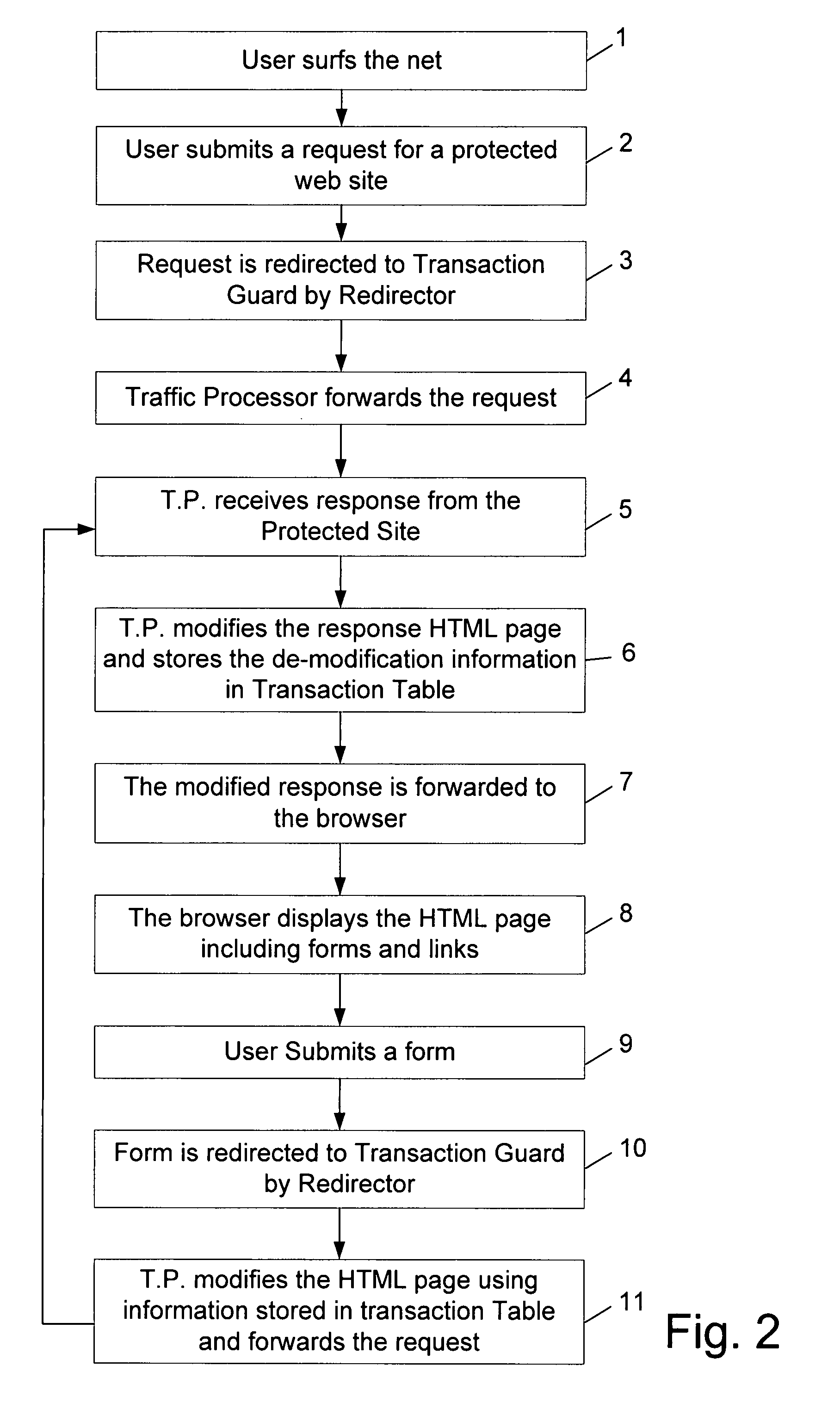Scrambling HTML to prevent CSRF attacks and transactional crimeware attacks
a technology of csrf and cross-site scripting, applied in the field of cross-site scripting vulnerability, can solve problems such as unauthorized transactional acts, malicious code can conduct an unauthorized transaction, and requires cross-site scripting vulnerability
- Summary
- Abstract
- Description
- Claims
- Application Information
AI Technical Summary
Benefits of technology
Problems solved by technology
Method used
Image
Examples
example
[0050]An example of a conventional method HTML web page received from a protected site is set forth in FIG. 4, the example shows a “Transfer money” page.
[0051]As can be seen in FIG. 4, a CSRF attacker, or a Trojan / malware program, can “inject” a request to https: / / www.yourbankhere.com / bank / trx.php?from=123&to =666&amount=9999.99, in order to transfer $9999.99 from account 123 (the account number of the victim user now logged in) to account 666 (the account number of the attacker).
Method of the Invention:
[0052]FIG. 5 shows the method of the invention where the same response page (of FIG. 4) from the bank is modified and obfuscated by the Traffic Processor, and the browser receives the depicted HTML page where the modifications are marked in bold. Note that the form action URL is modified—it is no longer a comprehensible name such as “trx.php”, but rather a random string (yoeju2y4kj35gv54e09df0sd). Likewise, form field names are obfuscated—e.g. r2gy74bras2yy96 instead of “to” and oi48...
PUM
 Login to View More
Login to View More Abstract
Description
Claims
Application Information
 Login to View More
Login to View More - R&D
- Intellectual Property
- Life Sciences
- Materials
- Tech Scout
- Unparalleled Data Quality
- Higher Quality Content
- 60% Fewer Hallucinations
Browse by: Latest US Patents, China's latest patents, Technical Efficacy Thesaurus, Application Domain, Technology Topic, Popular Technical Reports.
© 2025 PatSnap. All rights reserved.Legal|Privacy policy|Modern Slavery Act Transparency Statement|Sitemap|About US| Contact US: help@patsnap.com



